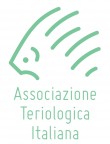UAGRA team will be present at the X National Mammalogy Congress with oral comunications and posters.
We will talk about invasive species, influence of climate change on forest ecosystem, parasites, bats and even more.
TALK
Integrative taxonomy and bioinvasions: a useful approach to identify and manage new sciurids in Europe. Mazzamuto M. V., Galimberti A., Cremonesi G., Pisanu B., Chapuis J-L., Stuyck J., Amori G., Su H-J., Aloise G., Preatoni D. G., Wauters L. A., Casiraghi M., Martinoli A.
Ecology, management and impacts of the invasive Pallas’s Squirrel in Italy. Mazzamuto M.V., Morandini M., Panzeri M., Preatoni D., Wauters L., Martinoli A.
Understanding invaders: how an easy evaluation of fecundity and body condition may help management. Romeo C., Santicchia F., Fesce E., Mazzamuto M.V., Vezzoso S., Grilli G., Martinoli A., Wauters L.A., Ferrari N.
Measurement of faecal glucocorticoid metabolite levels in Eurasian Red Squirrels (Sciurus vulgaris): effects of captivity, sex, reproductive condition, and season. Santicchia F., Dantzer B., Colombo G., Van Kesteren F., Palme R., Martinoli A., Wauters L.A.
Personality in Eurasian Red Squirrels (Sciurus vulgaris): does it pay to be bold? Wauters L.A., Santicchia F., Molinari A., Preatoni D.G., Martinoli A., Matthysen E.
Forest ecosystem: does climate play a key role in producer-consumer dynamics? Wild boar and broadleaved forest in the italian Apennine. Chirichella R., Bisi F., Chianucci F., Cutini A., Preatoni D.G., Apollonio M., Martinoli A.
POSTER
Multidisciplinary approach in monitoring Geoffroy’s Bat (Myotis emarginatus) in an agriculture-dominated landscape (river Ticino valley). M. Spada, S. Bologna, L. Bruhat, A. L. Heinzl, M. Piccioli, A. Molinari, R. Bettinetti, E. Boggio, A. Martinoli, D. Preatoni
Bat nursery dynamics in the alps: how can microclimate affect bats conservation? M. Spada, S. Bologna, A. Molinari, S. Mazzaracca, A. Pobbiati, D. Preatoni, A. Martinoli


